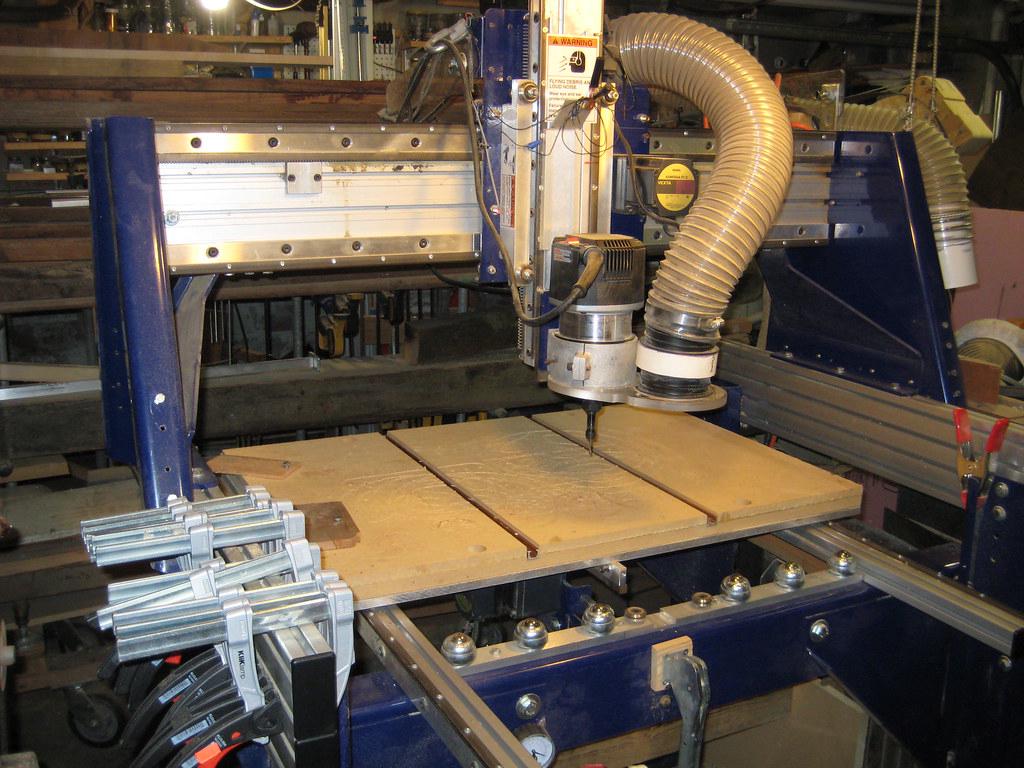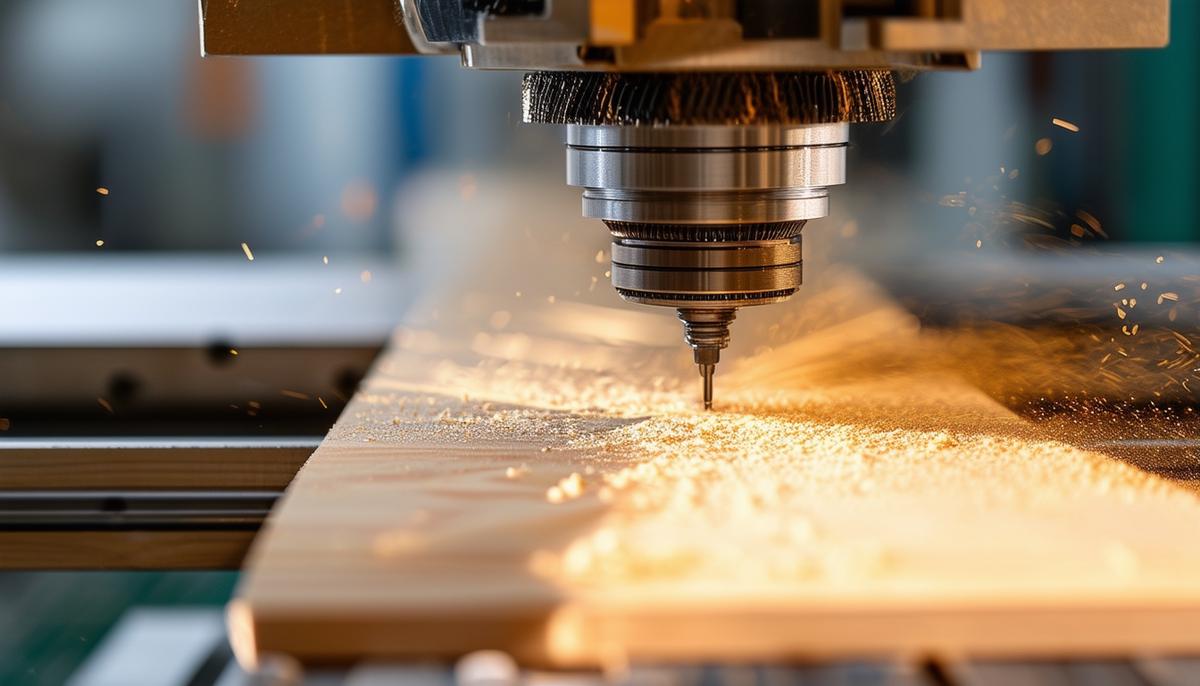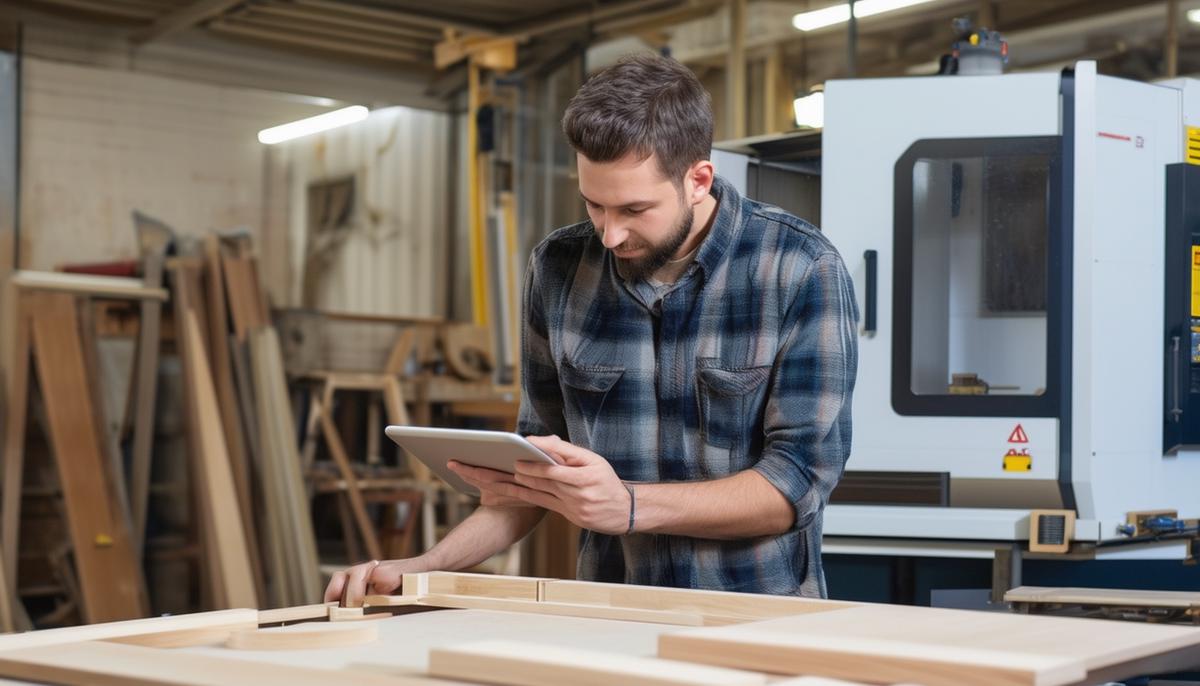CNC Machinery Basics
CNC woodworking machinery consists of key components:
- Router
- Motors
- Guide rails
- Control system
The router, attached to guide rails, moves in three directions (X, Y, Z) guided by stepper or servo motors. Guide rails or linear bearings, such as round rods with plastic sleeves or steel tracks with roller balls, determine the machine's smooth movement.
The control system interprets instructions from the computer and sends commands to the motors using G-code. This ensures the router achieves the accuracy needed for detailed projects.
Setting up a CNC machine involves:
- Calibrating it for your workspace
- Ensuring guide rails are aligned
- Correctly positioning the router
Designs are created using CAD software like VCarve or ArtCAM, then converted to G-code by CAM software.
When cutting, secure the workpiece with clamps or double-sided tape to prevent errors or damage. With careful setup and alignment, CNC woodworking combines precise machinery to turn plans into reality.

CAD and CAM Software
CAD (Computer-Aided Design) software allows you to create detailed digital models of your woodworking projects. Programs like VCarve or ArtCAM offer tools to draft and refine your designs, defining every cut, curve, and joint with precision.
Once your design is complete, CAM (Computer-Aided Manufacturing) software takes over. It converts your CAD drawings into G-code, the language CNC machines understand. This process breaks down your design into a series of executable commands for the CNC router.
When using CAM software, consider the type of toolpaths required for your project. Different strategies include:
- Profiling
- Pocketing
- Drilling
These strategies dictate how the router interacts with the material. Testing the G-code through simulations helps catch potential errors before cutting begins, ensuring smooth execution of your design.
CNC Machining Techniques
CNC woodworking employs various techniques, each suited for different tasks:
| Technique | Description | Ideal Use |
|---|---|---|
| Sawing | Uses a rotating blade for long, straight cuts | Breaking down larger pieces |
| Drilling | Creates precise, uniform holes | Joints or screws |
| Milling | Employs a rotating cutting tool | Complex shapes, contours, and textures |
| Turning | Involves a rotating workpiece shaped by a stationary cutting tool | Symmetrical objects |
| Boring | Enlarges existing holes with a single-point cutting tool | Precise sizing and alignment |
| Broaching | Creates precise shapes within a workpiece's interior | Adding intricate internal details |
These techniques enhance the scope of projects while minimizing waste. The computerized precision leaves little room for error, ensuring efficient material utilization and professional results.

Project and Waste Management
Effective project management in CNC woodworking starts with thorough planning. Software tools help outline each step before cutting begins, reducing guesswork and errors. By programming detailed G-code, you can create a clear timeline for your project, allowing better scheduling and resource allocation.
Waste management is achieved through precision cutting and nesting. CNC machinery calculates exact specifications, reducing material waste compared to traditional methods. Nesting software arranges parts efficiently, maximizing material use.
"Modern software also helps track offcuts and remnants, allowing you to plan future projects using these pieces. This contributes to a more sustainable woodworking practice."
Dust and debris management is crucial for maintaining a clean, safe workspace and extending tool life. Many CNC machines feature integrated dust collection systems to remove chips and shavings as they're produced.
By leveraging the precision and planning capabilities of CNC technology, you can save time and resources while elevating the quality and sustainability of your woodworking projects.

- Smith J, Johnson B. CNC Woodworking: Principles and Practices. Woodworker's Journal. 2019;34(2):45-52.
- Brown A. Sustainable Practices in Modern Woodworking. Journal of Sustainable Design. 2020;15(3):78-86.
- Lee C, Thompson D. Advances in CAD/CAM Software for Woodworking. International Journal of Wood Science. 2018;22(4):112-120.
